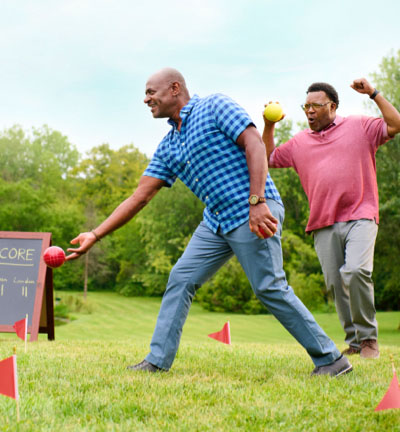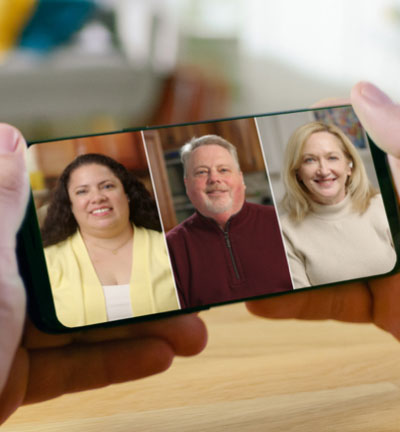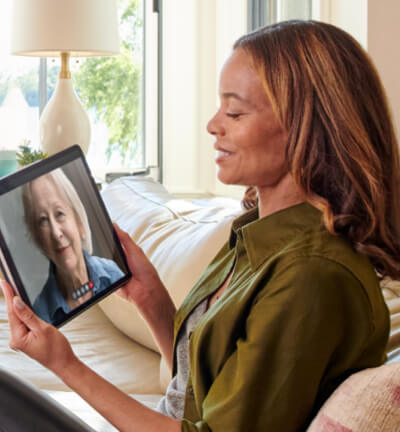Talking to children about MG as you cope with your MG diagnosis.
You may be unsure how to start the conversation, what to say and how to support a child when you are still figuring it all out yourself. This guide, which is based on my own professional experiences with my patients, has some tools that may help you communicate with children of all ages with honesty and support. Your care team may have additional insights on how to approach conversations with children.
In being honest about the hard parts of living with MG, you are giving your child the gift of knowing they can trust you.
Step 1: Starting the Big Talk
Honest and Simple
Starting the conversation can be difficult. Putting a name to MG and explaining how it affects the body may help children start to process that information. The level of detail depends on the child’s age but it’s important for them to know the following:
- How MG affects the body, such as describing problems with how nerves and muscles work together. Using pictures may help.
- How you and your doctors work together to manage your MG.
- It’s not contagious.
- You may look fine on the surface, but MG does not go away and there are days when you may not feel well.
- Living with myasthenia gravis has taught you to pace yourself and plan more, so you can try to live a full, fun life.
Consider describing how you might look or act different because of myasthenia gravis so they know what to expect. Explain what it feels like for you. This may mean saying something like it hurts your body in ways that they sometimes cannot see with their eyes. And it can change quickly, so that feeling good and bad can feel like a roller coaster going up and down suddenly.
In being truthful about the difficult parts of living with myasthenia gravis, you are giving your child the gift of knowing they can trust you. When adults make well-meaning promises such as “everything will be fine” and then it isn’t, children can realize that you are not giving them reliable information. As painful as it may feel to be unable to protect a child from difficult situations, it shows them you believe they can deal with it and can enhance their trust in you.
While this is the approach I generally recommend to parents, it never hurts to get a second opinion. If you have concerns that your child may not be ready or able to discuss your condition, you may want to reach out to your care team for support and to discuss an approach that feels right for your family.
Developmental Differences
Here are some communication tips based on ages and stages. These are broad categories with general suggestions based on child development. You know your child best, so do what you think fits. However, it’s always a good idea to consult with your child’s pediatrician for guidance on how to have this difficult conversation with your child.
Step 2: After the Big Talk
What to Expect
Children will have a range of responses, and they may vary considerably. Some younger children process difficult information through play, so if you have the big talk and they run off to play as if nothing happened, it’s okay. Others may cry or ask lots of questions. Teenagers may do their own version of separating and withdrawing, or wanting to be with friends, and that is also a form of processing that is totally normal. Your child’s pediatrician is a great resource, so don’t hesitate to reach out for additional guidance on expectations.
Step 3: Keeping the Big Talk Going
What’s Next
The “Big Talk” is only the beginning. As life with myasthenia gravis goes on, the conversation continues. Children and teens can be fickle about when and how to discuss deeper issues, so I recommend being patient and letting them take the lead. Ask them how much they want to know. Some kids prefer a lot of detail, whereas more information makes others feel more anxious and they will cope better with the big picture only. Both responses are just fine. Helping children feel more comfortable may provide them a sense of control in a situation characterized by lack of control.
Adults love to anticipate children’s questions and often beat them to it by explaining even before the children ask. In this case, let the child know you are available to answer any of their questions when they are ready to ask. Sometimes a child asks a question when they are emotionally ready for the answer. If you worry that they appear distressed and upset and may be avoiding asking questions, you may gently remind them you will be there for them when they are ready.
A theme of having this conversation with children is that neither of you has full control over myasthenia gravis. It’s important to find strength and hope in situations in which you may feel overwhelmed and helpless. I find that my patients, regardless of age, may cope better with stress when they feel like they know what is going on.
You can work with your child or teen to identify ways they can be helpful. I recommend to caregivers I work with, however, that they not demand their children’s help and put them in a position of even more powerlessness. It can be empowering to work with your child or teen to find ways they would want to be part of the plan to help you cope with the hard days.
Whether she knows it or not, my daughter is my motivation for how I get through the hard days.
I also recommend to caregivers another way to help build a child’s sense of security: develop and share with them a plan for when your MG symptoms are acting up. Sometimes knowing there is a plan in place on who will take care of them when you’re not feeling well may help them feel more assured.
Special Considerations
When to Worry
The range of “normal” coping in children and teens can be quite broad and diverse. Look out for changes in your child’s behavior and speak to your care team, including mental health professionals or your pediatrician, if you notice any differences in behavior. These are trained professionals who are willing to help guide you and your child.

The Role of a Grandparent with MG
If you are a grandparent who is planning to explain your disease to a grandchild, it is helpful to communicate your intentions with their parents. They may have suggestions for what will work best for the different personalities of their children. If possible, parents should be present for the first Big Talk, both to provide emotional support to the child and to know what was said so they can reinforce it in follow-up conversations where you may not be present. Moreover, there may be instances in which a parent may not want their child to know of their grandparent’s condition. Be sure to obtain their permission in any situation.
Just the Beginning
Parents and grandparents want what’s best for their children, and these conversations can be helpful for children to feel assured and hopeful. You may find that these communication tips and strategies may help these important conversations go more smoothly. I find that this openness and honesty can be a way for everyone in the family to feel closer and more connected in their shared journey.













